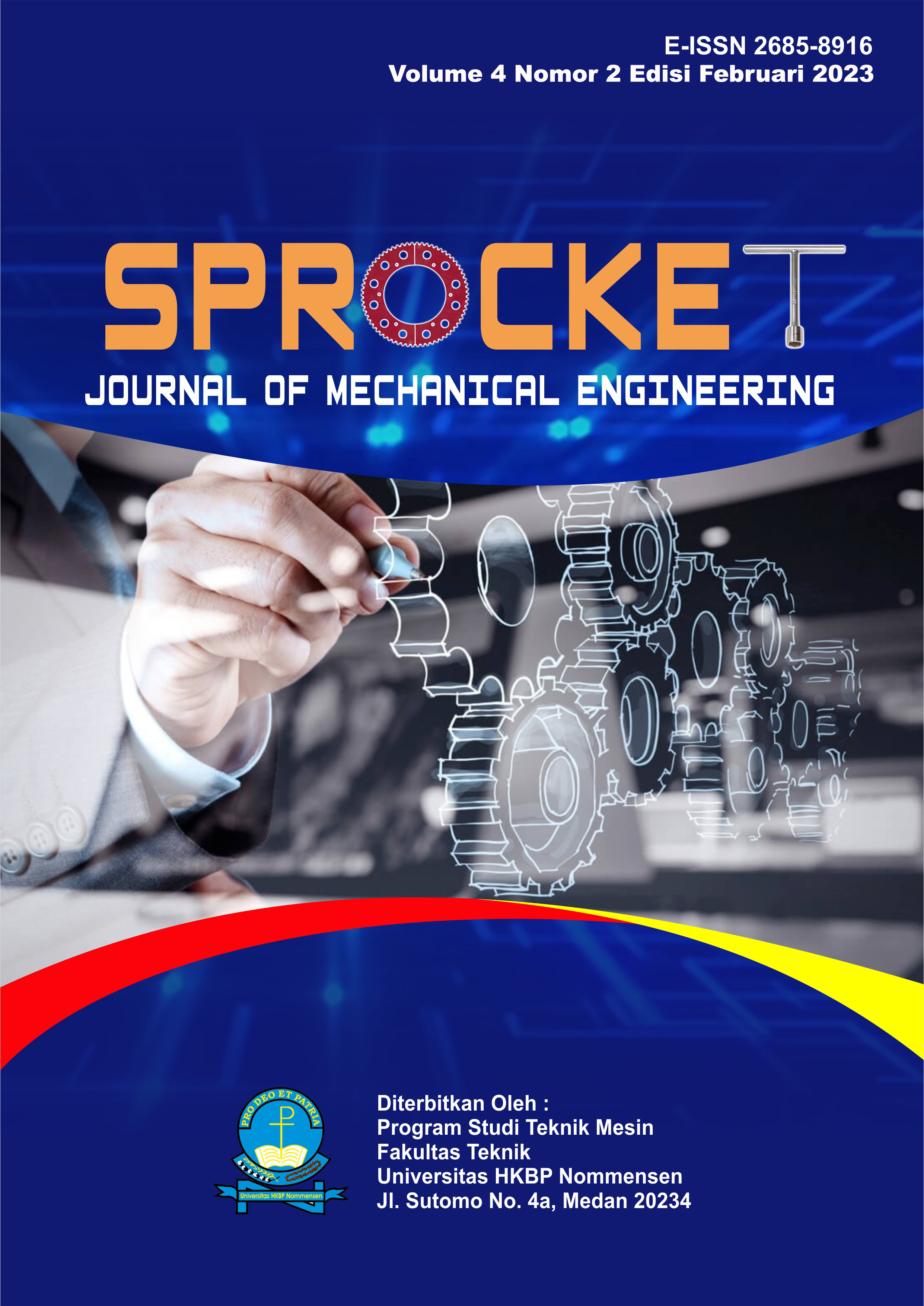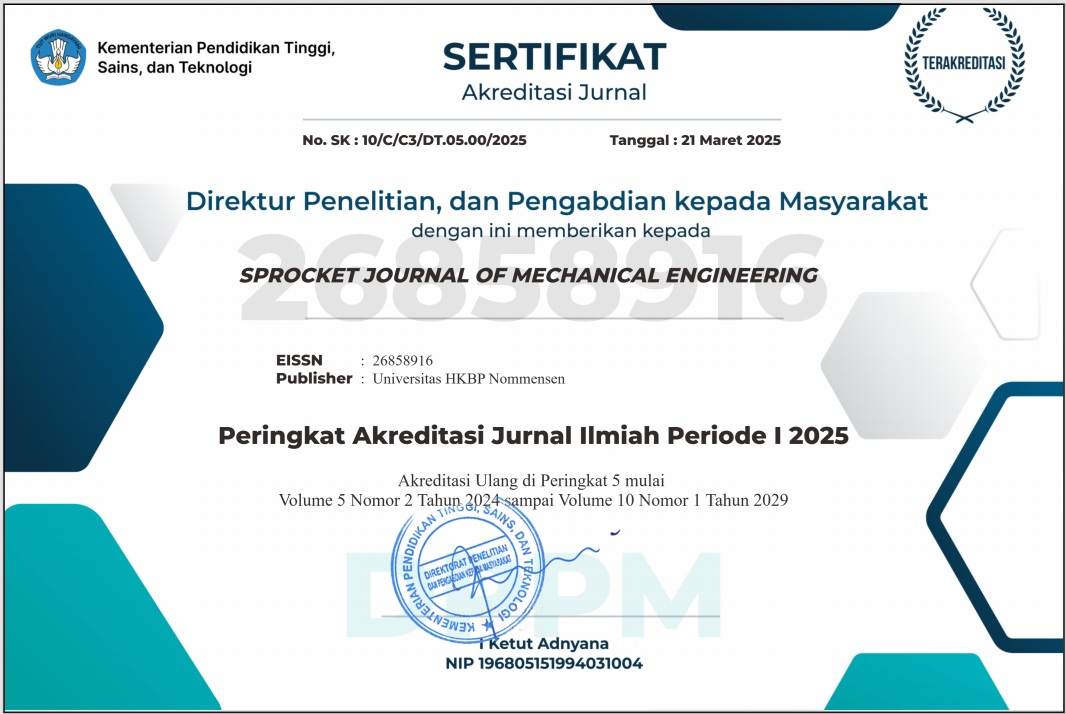Korelasi Hambatan Konus Dengan California Bearing Ratio Lapangan Pada Tanah Lempung
Abstract
The bearing capacity of subgrade for pavement thickness planning needs is generally determined by carrying out CBR testing. The BCR test in this study will be carried out by field CBR tests (field CBR) using the results of the DCPT examination. Inspection with the DCPT tool produces soil bearing strength data to a depth of 90 cm below the subgrade. The results of this examination are expressed by the Penetrometer Scale Penetrability (SPP) and the Penetration Resistance Scale (SPR). Road construction, which is certain to continue, requires data on identification of soil types and CBR where such data is not always available. In fact, the correlation between CBR and conical tip resistance (qc) already exists. Rahardjo (1996) suggests that for clay, the correlation between qc and CBR is CBR = 0.5 qc. However, the correlation results come from an unknown area, which of course the soil structure and properties are likely to be different and therefore it is also common to find that the time available to design a road pavement layer foundation is very urgent. Meanwhile, to obtain more accurate design results, Qc and CBR data are needed. To provide this connection using Cone Penetration Test (CPT) data at 4 stations and using correlation from the initial soil state data, soil stratigraphy is needed from the segment that will receive the construction. In this study, the CBR value correlation from Rahardjo (1996) and the Novo SPT application was used to obtain the CBR value and then describe the stratigraphy of the soil in that segment. From the results of the CPT to the correlation and Novo SPT, the CBR value to a depth of 2.0 m has not reached 6%, meaning that in this segment, if road construction is to be carried out, it requires soil improvement to obtain a CBR of at least 6%.
References
Braja M.Das, Mekanika Tanah 2 , Erlangga, Jakarta, 1998
De Ruiter, J. (Ed.). 1988. Penetration Testing 1988, Proceedings, First International Symposium on Penetration Testing, ISOPT-1, March 20–24, Orlando.
Lambe, T.W. & Whitman, R.V., Soil Mechanics, John Wiley and Son, Inc., New York, 1969
Wesley L.D., 1977, Mekanika Tanah , Badan Penerbit Pekerjaan Umum, Jakarta.
H.Bakrie Oemar & S.Nurly Gofar, 1995. Sifat-Sifat Tanah dan Metode Pengukurannya. Universitas Sriwijaya, Palembang.
Hardiyatmo, H.C. 2011 , Perancangan Perkerasan Jalan & Penyelidikan Tanah , Universitas Gajah Mada, Yogyakarta.
Bowless. J.E, 1992. Analisis dan Desain Pondasi. Erlangga. Jakarta.
Hardiyatmo, H. C., 2010, Analisis dan Perancangan Fondasi I, Gadjah Mada University Press, Yogyakarta.
Edi Barnas1, Barian Karopeboka. Penelitian Kekuatan Tanah Metode Cbr (California Bearing Ratio)
T. Lunne, P.K. Robertson, John J.J.M.Powell. 1997. Cone Penetration Testing in Geotechnical Practice. E & FN Spon, New York

This work is licensed under a Creative Commons Attribution 4.0 International License.
Penulis yang menerbitkan dengan SPROCKET JOURNAL OF MECHANICAL ENGINEERING menyetujui ketentuan berikut :
- Penulis memegang hak cipta dan memberikan jurnal hak penerbitan pertama dengan karya yang dilisensikan secara bersamaan di bawah Lisensi Internasional Creative Commons Atribusi 4.0 . yang memungkinkan orang lain untuk berbagi karya tersebut dengan pengakuan atas kepengarangan karya dan penerbitan awal dalam jurnal ini.
- Penulis dapat membuat pengaturan kontraktual tambahan yang terpisah untuk distribusi non-eksklusif atas versi jurnal yang diterbitkan dari suatu karya (misalnya, mempostingnya ke repositori institusional atau menerbitkannya dalam sebuah buku), dengan pengakuan atas penerbitan awalnya di jurnal ini.
- Penulis diizinkan dan didorong untuk mengunggah karya mereka secara daring (misalnya, di repositori institusi atau di situs web mereka) sebelum dan selama proses penyerahan, karena hal ini dapat mengarah pada pertukaran yang produktif, serta kutipan yang lebih awal dan lebih banyak dari karya yang diterbitkan (Lihat Pengaruh Akses Terbuka ).






.png)
.png)

